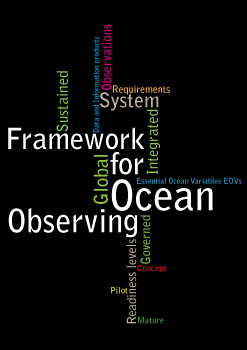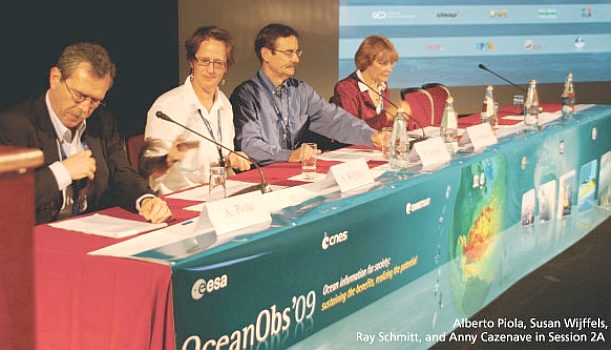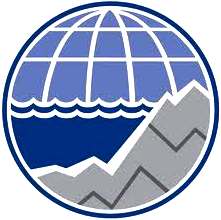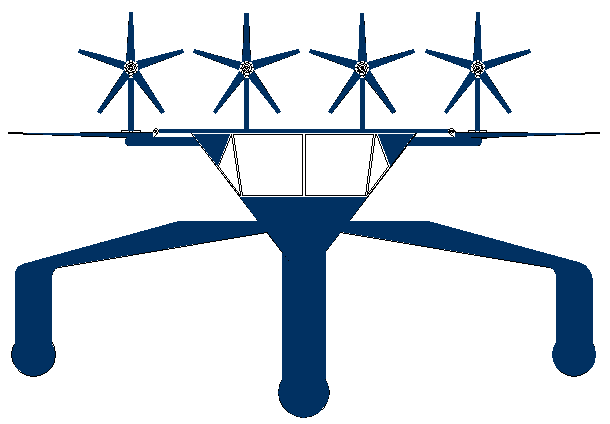|

EU - NOVEMBER 25 2014
The largest marine science project that the European Commission has ever funded, the $31.7 million AtlantOS project, is due to start in January 2015, bringing together a wide spectrum of scientific disciplines from more than 60 research organizations across the world to enhance the efficiency of ocean observation procedures.
By fundamentally restructuring and integrating the existing, loosely-coordinated Atlantic ocean monitoring activities, as well as filling in the gaps, the multidisciplinary AtlantOS project will result in more efficient, more complete and lower cost information delivery. According to the
National Oceanography Center (NOC), which will play a leading role in the project, the result is expected to have benefits ranging from improved safety planning for coastal communities in the event of
oil
spills, to better implementation of marine policies and more accurate
weather forecasting for
offshore energy.
Dr. Doug Connelly from NOC, who helped secure funding for AtlantOS, said,
“What is really exciting about this project is that it brings together so many different scientific disciplines in a single project in a way that has never been done before. With contributions from biogeochemistry, physics, biology, technology, ocean observation and modeling, this will be a truly multidisciplinary project.”
AtlantOS will improve the readiness of existing ocean observing networks and data systems, as well as strengthening Europe’s contribution to the Global Ocean Observing System. Within this project,
NOC will be playing the integral role of linking coastal and offshore systems through sea level work and coastal biogeochemical projects, as well as coordinating field observations, creating products to aid weather prediction and leading the development of new observation technologies, techniques and systems to deliver data on all priority parameters.
Dr. Matt Mowlem, who leads technology developments in NOC and AtlantOS,
is quoted as saying, “In addition to integrating observational efforts and best practice internationally, AtlantOS will support the development of technologies and techniques. It will also address the current lack of data for chemical and biological process in ocean observing, which should enable a step-change in our ability to understand and manage this unique environment.”
Professor Ian Wright, who is the Director of Science and Technology at NOC, observed that this type of project
“is central to the NOC’s ambitions in developing in situ and persistent observing of multiple ocean parameters within a context of working with strong European partners.”
The AtlantOS project has received funding from the European Commission through the first ‘Blue growth’
Horizon2020 call, which aims to promote growth in the ocean economy through innovation and the improved sharing of data. The project, led by Professor Dr. Martin Visbeck (GEOMAR) will last 51 months.
OPTIMIZING
and ENHANCING the INTEGRATED ATLANTIC OCEAN OBSERVING SYSTEM
Acronym:
AtlantOS
AtlantOS
is a project responding to the Horizon 2020 call BG-8-2014:
Developing in-situ Atlantic Ocean Observations for a better management
and sustainable exploitation of the maritime resources.
The
first stage proposal was submitted on the 12th of March 2014 (with a
second stage deadline 26 June). The project will start early 2015.
AtlantOS
is coordinated by the GEOMAR Helmholtz Centre for Ocean Research Kiel,
Kiel, Germany.
AtlantOS
is a research and innovation project that proposes the integration of
ocean observing activates across all disciplines for the Atlantic,
considering European as well as non-European partners (referencing to
"The Galway Statement on Atlantic Ocean Cooperation",
May 2013). The proposal applies the "Framework for Ocean Observing"
to the observing of the Atlantic. The overarching goal of AtlantOS is
the integration of the so far loosely-coordinated set of existing ocean
observing activities to a sustainable, efficient, and fit-for-purpose
Integrated Atlantic Ocean Observing System (IAOOS). The IAOOS is to form
the ocean in-situ observing backbone of the Copernicus
Marine Monitoring system, which is the marine part of the European
Earth Observation Programme.

COPERNICUS
The
Copernicus marine monitoring service provides regular and systematic
reference information on the state of the physical oceans and regional
seas. The observations and forecasts produced by the service support all
marine applications.
For
instance, the provision of data on currents, winds and sea ice help to
improve ship routing services, offshore operations or search and rescue
operations, thus contributing to marine safety.
The
service also contributes to the protection and the sustainable
management of living marine resources in particular for
aquaculture, fishery research or regional fishery
organisations.
Physical
and marine biogeochemical components are useful for water quality
monitoring and pollution control. Sea level rise helps to assess coastal
erosion. Sea surface temperature is one of the primary physical impacts
of climate change and has direct consequences on marine ecosystems. As a
result of this, the service supports a wide range of coastal and
marine environment applications.
Many
of the data delivered by the service (e.g. temperature, salinity, sea
level, currents, wind and sea ice) also play a crucial role in the
domain of weather, climate and seasonal forecasting. The
service is currently delivered in a pre-operational mode.
The
products delivered by the Copernicus marine environment monitoring
service today are provided free of charge to registered users through an
Interactive
Catalogue available on the marine.copernicus.eu
web portal. A downloadable pdf version of the catalogue of products is
also available on the same website.
The
pre-operational marine service of Copernicus is currently provided
through the EU-funded project MyOcean2.

The
Framework for a sustainable global ocean observing system

OCEANOBS'09
- 25 SEPT 2009
The
OceanObs'09 Conference brought together more than 600 scientists from 36
nations, supported by 99 Community White Papers and 47 Plenary Papers,
to build a common vision for the provision of
routine and sustained global information on the marine environment
sufficient to meet society’s needs for describing,
understanding and forecasting marine variability (including physical,
biogeochemical, ecosystems and living marine resources), weather,
seasonal to decadal climate variability, climate change, sustainable
management of living marine resources, and assessment of longer term
trends.
OceanObs'09
Conference Proceedings
The
Conference
Proceedings were published in 2011 and printed in 2012.
The
Final Conference Statement incorporates comments
received from the participants of the conference, and is a call
to action available as a document
» and as a brochure
»
Conference
Summary »
Plenary
Papers »
Community
White Papers »
A
Framework for Ocean Observing
The
Framework for Ocean Observing called for by the OceanObs'09 Conference
Statement and adopted by the Global
Ocean Observing System is meant to guide the ocean observing
community as a whole to establish an integrated and sustained global
observing system - one that includes ocean physics, biogeochemistry,
and ocean biology and ecosystems, and addresses the variables to be
measured, the approach to measuring them, and how their data and
products will be managed and made widely available to modeling efforts
and a wide range of users.
A
Framework for Ocean Observing »

OceanObs'09
conference - Alberto Piola, Susan Wijffels, Ray Schmitt and Anny
Cazenave.
OCEANOBS'09
SPONSORS
IOC/UNESCO,
ESA (organizing sponsors), CNES,
EUMETSAT, NSF,
WMO, NOAA,
NASA, GEO,
CLISAP, ONR,
IGBP, CLS,
Australian Bureau of Meteorology, BSH
Germany, Mercator Océan,
myOcean, Ifremer
Endorsing
organizations
GCOS,
GOOS, WCRP,
JCOMM, PICES,
SOLAS, IMBER,
GLOBEC, POGO

MEOPAR
CANADA
Canada has been invited to join AtlantOS, a large European consortium that is bidding for up to €20 million from the European Union’s Horizon 2020 program to establish the Atlantic Ocean’s first integrated ocean observation system. The bid for Canadian participation in the Integrated Atlantic Ocean Observing System (IAOOS) is being led by the Marine Environmental, Observation, Prediction and Response Network (MEOPAR) — a traditional Network of Centres of Excellence.
MEOPAR’s immediate challenge is to align the relevant domestic funders to support Canada’s inclusion in the program — borne out of the Galway initiative on Atlantic Ocean Cooperation launched less than a year ago — and work with other ocean research organizations to ensure industry participation.
Like so many areas of S&T, however, ocean research in Canada is hobbled by the lack of overarching strategies and coordination amongst research organizations and funding sources.
The recently released expert panel report on ocean science by the Council of Canadian Academies concluded that scientists face formidable challenges in coordinating activities and pooling resources to support Canada’s considerable expertise in the field.
Canada ranks among the top countries in the output and impact of scholarly ocean science papers and has several world class systems for ocean observation and monitoring
Dr Doug Wallace, scientific director MEOPAR and holder of the Canada Excellence Research Chair in Ocean Science and Technology (CERC Ocean), is leading the charge to secure Canadian participation. He says MEOPAR is ideally positioned to play such a role and has the flexibility to act quickly. Participation in AtlantOS is critical to ensure that Canadian interests and research opportunities are well represented over the course of the research program.
“It’s a great opportunity and for MEO-PAR a great challenge … There’s potentially high benefit to accessing EU expertise and equipment as this information is highly relevant to
Canada,” says Wallace. “The key is to find multisectoral cooperation and work effectively between the research community and industry. The US is gearing up for this and Canada needs to as well … There’s money in the system right now to coordinate and initiate a response.”
The initiative is designed to build on existing capacities on both sides of the Atlantic to enhance understanding of ocean processes at the level of the entire basin while reducing the costs of in-situ ocean observation. Expected impacts include increased temporal and geographic coverage of observational data in the Atlantic Ocean and development of standardized process models and forecast systems.
MEOPAR has produced a white paper — A Strategy for a Canadian Response to the Galway Alliance’s call for an Integrated Atlantic Ocean Observing System — which will be officially presented at the Oceans 14 conference in St John’s NF in September. In the meantime a draft version has been shared with US and European investigators.
Also being explored is the establishment of a multisectoral umbrella organization to guide coordination and support of Canada’s Atlantic Ocean and coastal regions. If successful, the approach could be replicated for ocean research activities and observation systems on the Pacific and Arctic coasts.
“Funding is the biggest challenge. Research funding is primarily academic and we can build on what DFO (Department of Fisheries and Oceans) is doing,” says Wallace. “Then there’s the challenge of industry involvement, especially SMEs (small- and medium-sized enterprises). Participating EU companies will receive 100% of their research costs and overhead. We don’t have this in Canada and there’s no mechanism to integrate academic and government research efforts.”
Also missing is financial support for infrastructure, data management, field work and support for industry to demonstrate mobile technologies.
“Innovation in the ocean technology world comes out of groups of people trying to do difficult things together. That’s where the ideas are developed and exchanged, — an intellectual environment where ideas bubble up to the surface and are tested” says Wallace. “The technology component needs to be integrated. For instance, the need for information and ocean measurements and predictions in the offshore oil and gas industry. Industry is already collecting data but it could integrate it with academic and government measurements.”
MEOPAR is working closely with the Dalhousie Univ-based Institute for Ocean Research Enterprise (IORE) to promote partnerships with Canada’s considerable expertise in ocean research (much of it located in Halifax) and find ways to engage industry so that economic benefits can be realized.
Jim Hanlon, CEO of IORE, formerly called the Halifax Marine Research Institute, says Atlantic Canada has a long tradition of strong links between industry and government laboratories, particularly those of DFO.
“Companies have enjoyed rich relationship with government labs and there’s been huge IP
(intellectual
property) transfer but there’s very little interaction between companies and universities,” says Hanlon . “We need to demonstrate the value of this program to Canadian industry. The bridge is being built.”
Supported by a core grant of $350,000 annually from the Nova Scotia government, IORE’s mission is to build partnerships to help create sustainable economic activity from the region’s ocean research. It also serves as an outreach vehicle for CERC
Ocean.
Wallace says that while MEOPAR can initiate Canada’s participation, there needs to be an alignment of funding streams. That could include DFO’s reduced but still significant research efforts and programs such as the $5-million Ventilation, Interactions and Transports Across the Labrador Sea (VITALS) program, funded by the
Natural Sciences and Engineering Research
Council.
ABOUT
MEOPAR
ssThe Marine Environmental Observation Prediction and Response Network (MEOPAR) is a team of outstanding Canadian researchers who are improving Canada’s ability to manage and respond to risk in the marine environment.
Through research and observation, MEOPAR is working to help reduce Canada’s vulnerability and exposure to hazards and improve responses to marine emergencies. This is achieved through both new and existing partnerships with organizations including:
- Academia
- All levels of government
- The insurance industry
- The oil and gas industry
- Marine technology firms
- Coastal communities
- Non-governmental organizations
Through strong multi-disciplinary training, MEOPAR fosters highly qualified personnel capable of placing Canada at the forefront of marine research and hazard management.
Over the coming decades, MEOPAR will develop disaster and risk reduction tools and propose positive adaptation measures which will allow Canada to be better positioned to manage all forms of ocean impact. Ultimately, MEOPAR will help us to better understand our greatest national resource from sea, to sea to sea.
MEOPAR
CONTACTS
1355 Oxford Street
Suite 2-41
Halifax, Nova Scotia
Canada B3H 4J1
Doug Wallace
Scientific Director
Tel: 902-494-4132
douglas.wallace@dal.ca
http://dal.ca/cercocean
Ronald Pelot, Ph.D., P.Eng.
Associate Scientific Director
Tel: 902-494-6113
Ronald.Pelot@Dal.ca
http://www.marin-research.ca/
NSERC
- Aims to make Canada a country of discoverers and innovators for the benefit of all Canadians. The agency supports university students in their advanced studies, promotes and supports discovery research, and fosters innovation by encouraging Canadian companies to participate and invest in postsecondary research projects. NSERC researchers are on the vanguard of science, building on Canada’s long tradition of scientific excellence.
NSERC
350 Albert Street, 16th Floor
Ottawa, ON, K1A 1H5
Toll free: 1-855-275-2861
Fax: 613-992-5337

CONTACTS
|
National
Oceanography Centre
University of Southampton Waterfront Campus
European Way
Southampton SO14 3ZH
United Kingdom
Tel: +44 (0)23 8059 6666
|
National
Oceanography Centre
Joseph Proudman Building
6 Brownlow Street
Liverpool L3 5DA
United Kingdom
Tel: +44 (0)151 795 4800
|
LINKS
& REFERENCE
https://www.atlantos-h2020.eu/
https://www.atlantos-h2020.eu/
http://www.oceanobs09.net/foo/
http://europa.eu/rapid/press-release_IP-13-459_en.htm
http://www.copernicus.eu/pages-principales/services/marine-monitoring/
http://www.nserc-crsng.gc.ca/
Arctic
Ocean
Atlantic
Ocean
Baltic
Sea
Bering
Sea
Caribbean
Sea
Coral
Sea
East
China Sea
English
Channel
Gulf
of Mexico
Indian
Ocean
Mediterranean
Ocean
North Sea
Pacific
Ocean
Persian
Gulf
Sea
of Japan
South
China Sea
http://auvac.org/community-information/community-news/view/935
http://noc.ac.uk/
http://noc.ac.uk/sbri
Oceanology
International OI China 2014 Conference Programme Remote Technology
Underwater Kevin Forshaw
NOC
robot vehicles launched from Plymouth-on fish tracking mission
NOC
research at sea mars
twitter
noc news
Meopar
Canada-aims-to-join-research-consortium-for-atlantic-ocean-observation-system
http://meopar.ca/canada-aims-to-join-research-consortium-for-atlantic-ocean-observation-system/
https://twitter.com/nocnews
http://noc.ac.uk/news/robot-vehicles-launched-from-plymouth-morning-fish-tracking-mission
http://noc.ac.uk/research-at-sea/nmfss/mars
Marine
Technology News Atlantos project enhance ocean
http://www.marinetechnologynews.com/news/atlantos-project-enhance-ocean-504391

PATENT
PENDING - The big boy in ocean research, Bluefish ZCC technology
provides a means to act on information received during oceanographic
surveys. Small autonomous marine survey craft are fine as far as
collecting data is concerned, but useless in certain circumstances,
without end effectors onboard that may be deployed in hands on
fashion.
BIOLOGICAL
SAMPLING - A
Bluefish ZCC can be manned or unmanned. It is a scientific work station.
Depending on specification, this incredibly versatile design can be put to
most uses, even collecting and transporting live samples, with a modified
ROV dock - used as a capture and holding tank for marine life, instead of
housing a dedicated submersible.
This
ship uses no diesel fuel
in the quest to monitor the oceans at relatively high cruising speeds of
between 7-10 knots, 24/7 and 365 days a year. What makes all of this possible is the revolutionary energy harvesting
system that provides a power to weight ratio of more than 3kW
per ton, with up to 7kW per ton being attainable using more exotic
materials. That gives oceanographers
the power to do more.
OIL
SPILLS - Dedicated versions of the Bluefish ZCC platform could be
deployed as oil clean-up robots,
to cope with disasters like the Deepwater
Horizon.
PLASTIC
OCEANS - A fleet of our ZCCs could provide a solution to the, as
yet, unresolved floating fields of plastic on our oceans.
MARINE
ACADEMIC INSTITUTIONS A-Z
Australian
Maritime - Geneve
- Hawaii
Renewable - NERC
- Newcastle
Naval
NOC
Oceanographic - Plymouth - Portsmouth
- Seoul
Naval - SOTON
Strathclyde
Marine - Sussex
- TU
Delft - USP South
Pacific - Webb
Institute
|






